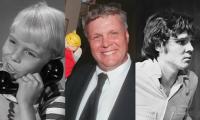LAHORE: It might be a coincidence, but the eventful post-9/11 history shows that like the recently killed Mullah Akhtar Mansour, numerous formidable al-Qaeda or Taliban leaders were either captured or killed on the Pakistan and Afghan soils during the hot summer season stretching between April and October, an exclusive research undertaken by the “Jang Group and Geo Television Network” shows.
Interestingly, it was also during the merciless summer months that the death announcements of a couple of much-feared Afghan warlords like Mullah Omar and Jalaluddin Haqqani had suddenly surfaced in Western media. Mullah Muhammad Omar, the founder and spiritual leader of the Taliban, had reportedly perished owing to natural causes in April 2013 in Afghanistan. He was confirmed dead on July 29, 2015, by the Afghan government and then by Taliban officials.
The news of Mullah Omar’s death was first leaked through unnamed sources in Kabul and the Afghan intelligence and government soon after followed in with a confirmation. On July 31, 2015, the BBC had revealed that Jalaluddin Haqqani, the Afghan founder of the militant Haqqani network, had died due to protracted illness at least a year ago. The British media house had stated that Haqqani had died after a long illness and was buried in Afghanistan. The report about Haqqani’s demise had surfaced just two days after the Taliban had acknowledged that its leader, Mullah Omar, was no more.
The BBC had reported: “Jalaluddin Haqqani was an Afghan guerrilla leader, who fought Soviet troops that occupied Afghanistan in 1980s. US officials have admitted that at the time, he was a prized asset of the Central Intelligence Agency (CIA). However, he later allied himself to the Taliban after they took power in Afghanistan in 1996. Haqqani served as a cabinet minister under the Taliban's supreme leader, Mullah Omar.”
The al-Qaeda Supremo, Osama bin Laden, was gunned down by US Marines in the picturesque town of Abbottabad on May 2, 2011. On September 15, 2002, another important al-Qaeda operative called Ramzi Binalshibh was arrested in Karachi and handed over to the FBI. A prominent Taliban stalwart Mullah Abdul Razaq was captured by Afghan forces on April 1, 2003 from a rugged mountainous region north of Kandahar. Earlier, Razak’s son Abdul had been killed in September 5, 2002 as he had tried to shoot the then Afghan President Hamid Karzai.
In April 2003, Khalid bin Attash or Walid bin Attish, the man believed to have been a prime suspect in the case relating to the October 2000 attack on the American Naval ship “USS Cole” at Aden, was seized in Karachi. He too was handed over to the US authorities for further probe. Mullah Ghausuddin was killed in a gun battle in Afghanistan’s Zabul province on May 27, 2003. On June 18, 2004, a senior Taliban commander in South Waziristan, Maulvi Nek Muhammad, was hit by US drones in Pakistan. He had links to Osama bin Laden and Mullah Omar.
On July 30, 2004, after a 14-hour long encounter, a Tanzanian national and a badly-wanted al-Qaeda commander Ahmed Khalfan Ghailani was arrested from the city of Gujrat--to the sheer delight of the American leadership. Wanted by the US for his involvement in the explosions outside the US Embassies in Kenya and Tanzania in 1998, Khalfan Ghailani had reportedly escaped to Pakistan immediately after the 1998 explosions.
In August 2004, an al-Qaeda computer wizard, known as Mohammad Naeem Noor Khan, was arrested in Lahore. He was believed to have had extensive links with Khalfan Ghailani, who was arrested just days before him. On May 2, 2005, another senior al-Qaeda stalwart Abu Faraj al-Libi or Mustafa al-Uzayti was arrested by the Pakistani sensitive agencies in Mardan, a town near Peshawar. He was sent to the Guantanamo Bay detention camp, having previously been held at some secret location.
A Libyan by origin, Libi was believed to be an al-Qaeda's number three at the time of his arrest and the head of the organisation’s network functional in Pakistan. In May 2006, credible US wire agency Associated Press had revealed that a man called Mustafa Setmarian Nasar was captured in a sting operation carried out in the city of Quetta. Quoting a US law enforcement official, the Associated Press had then reported that the dual Syrian-Spanish national was carrying a head money of $5 million.
Nasar was reportedly captured in late October 2005. He was wanted in Spain in connection with the 2004 Madrid train bombings. Nasar was initially mentioned by British media as a possible suspected planner in the July 7, 2005, London bombings.
On May 14, 2008, chief of al Qaeda's external network, Abu Sulayman Jazairi, was killed by American forces. Jazairi was a senior trainer, an explosives expert, and an operational commander tasked with planning attacks on the West. On July 28, 2008, Abu Khabab al Masri, was killed. He was chief of al-Qaeda's weapons of mass destruction programme and a master bomb maker.
On July 3, 2009, Mufti Noor Wali--a suicide bomber trainer for the Taliban and al-Qaeda--was killed in Pakistan was the American. On August 5, 2009, the leader of the Pakistani Taliban, Baitullah Mehsud was killed by a US drone while he was staying with his second wife at his father-in-law's house in the Zangar area of South Waziristan. He was Pakistan's most feared militant, accused of scores of suicide bombings and other attacks.
In August 2009, another Al-Qaeda strong man, Tohir Yuldashev, was killed in a US predator airs strike, shortly after Baitullah Mehsud’s death. Yuldashev, an Uzbek by origin, had reportedly lost a leg and arm in the drone missile strike on August 27, 2009, and was rushed to a hospital in Zhob (Balochistan), where he had later succumbed to his injuries. On September 14, 2009, an Uzbek Jihadi leader and a close al-Qaeda ally, Najmuddin Jalolov, was killed. On May 21, 2010, top al-Qaeda leader Mustafa Abu Yazid, had succumbed to his injuries after a US airstrike. Also known and Sheikh Saeed al Masri, Yazid was Al-Qaeda's eminent leader in Afghanistan and top financial official.
The May 28, 2010, US air strike in Pakistan had claimed the life of Osama bin Ali bin Abdullah bin Damjan al Dawsari. He was a senior operative and key link to the Taliban in South Waziristan, Pakistan. He had also facilitated operations in Afghanistan. In June 2010, Abu Ahmed, an Al-Qaeda military commander, had died in a US airstrike on Pakistani soil. He had conducted operations in Afghanistan. On September 14, 2010, an al-Qaeda stalwart, Saifullah Haqqani, was hit by a US missile. He was a Haqqani Network military commander in Afghanistan and a cousin of Siraj Haqqani.
On June 3, 2011, another formidable al-Qaeda leader, Ilyas Kashmiri, was taken down by US forces in West Waziristan during a predator air strike. He was one of the most perilous al-Qaeda members, with a large experience as a strategist and as a military commander. Kashmiri was also seen as one of the possible leaders of Al Qaeda to succeed Osama Bin Laden after his death.
On August 22, 2011, a senior al-Qaeda commander, Atiyah Abd al Rahman, was killed by American drones. He had served as Osama bin Laden's chief of staff and was a top operational commander. On September 11, 2011, a senior al Qaeda leader and the operations chief for Pakistan, Abu Hafs al Shahri, was fatally hit. On September 30, 2011, Haleem Ullah, a deputy commander to North Waziristan Taliban leader Hafiz Gul Bahadar, was successfully targeted by the Americans. On October 13, 2011, Abu Miqdad al Masri, was killed. He was a member of al-Qaeda's Shura Majlis and was also involved in al- Qaeda's external operations. It was also on October 13, 2011 that Jan Baz Zadran, Siraj Haqqani's deputy, was taken down by the US forces.
On October 14, 2011, a senior al-Qaeda operative, Ahmed Omar Abdul Rahman, was killed by drones. With ties to the Haqqani Network, Rahman was the son of the 'Blind Sheikh,' the spiritual leader of the Egyptian Islamic Group, who is in prison in the US for his involvement in the 1993 attack on the World Trade Center.
On April 29, 2012, a known al-Qaeda operative Abu Usman Adil was fatally struck by US drones. Abu Usman Adil was the leader of the Islamic Movement of Uzbekistan and was deemed a spearhead the expansion of the group's operations in Afghanistan. On June 4, 2012, Abu Yahya al Libi was killed by US drones too. Abu Yahya was a Libyan citizen and had served as al-Qaeda's chief of staff and senior cleric and ideologue.
Similarly, yet another senior Taliban military commander, Mullah Dadullah, was killed by the British and American Special Forces in Afghanistan in the summer of 2012. The August 25, 2012, edition of 'The Guardian' had reported: “A NATO air strike in eastern Afghanistan killed a dozen militants, including a senior leader of the Taliban in Pakistan, the international military coalition has said. The strike in Afghanistan's eastern Kunar province killed Mullah Dadullah, the self-proclaimed Taliban leader in Pakistan's Bajur tribal area that lies across the border. Dadullah reportedly took over after Bajur's former Pakistani Taliban leader, Maulvi Faqir Mohammed, had fled to Afghanistan to avoid Pakistani Army operations.”
Deceased miner has been identified as Allah Muhammad, reportedly a citizen of Afghanistan
Performing in British capital after a break of two years, Rahat lived up to his reputation as King of Qawwali and Sufi...
HDAP Chairman notes Drap had halted registration process, citing need for federal cabinet approval
A recent example is globalisation and its dividend in enhancing global economic output and volume
Shah says people are worried if they do not receive their share of water, their land would become barren
According to doctors a dead child was removed during the pregnant woman’s post-mortem







